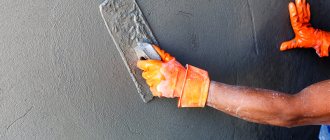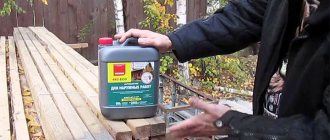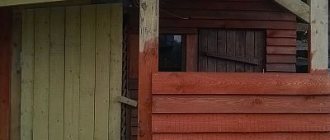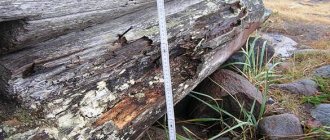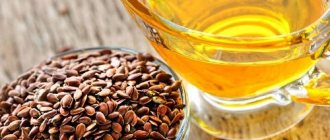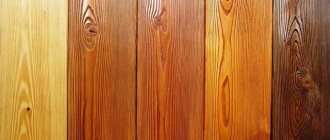Since ancient times, wood has been one of the main building materials. Technological progress and the development of society have added many new sources of raw materials to the human arsenal. Environmentally friendly natural wood has managed to maintain its position, and it continues to be popular. When constructing infrastructures and fences, wood is often preferred. A wooden fence will allow any building to blend organically into the surrounding landscape. Other advantages of wood material include its low cost, it is not in short supply and is easily available; a simple set of tools is enough to install wood structures; no special skills are required.
There are many options for making wooden fencing - it opens up wide opportunities for creative self-realization; this material combines well with buildings made from any other elements. The only drawback of this aesthetic material is its fragility. Being in the open air, in an environment with high humidity, unprotected fences quickly become dilapidated. Wood impregnation, which protects against moisture and rot, will help level out this flaw.
Why do you need moisture impregnation for wood?
Being a natural material, wood is naturally hygroscopic and tends to absorb moisture upon contact with melt water and precipitation. When wood humidity increases by more than 15%, it begins to swell, delaminate, and lose its shape. Over time, mold and fungi appear on it, and rotting processes develop, which reduce the durability and aesthetics of wooden structures.
Modern moisture impregnation for wood gives products water-repellent properties and helps to avoid high humidity. Its use minimizes the risk of rot, which not only spoils the appearance of the tree, but also negatively affects human health. Spores of putrefactive formations can enter the human lungs and provoke chronic diseases, so protecting wood from excessive humidity is an important step in creating a favorable microclimate in the house.
What is the danger of rot?
The most obvious answer is that the structure of the wood is destroyed, delaminates, and falls into pieces in the shortest possible time. Elements of the porch, fence, and building will have to be changed. The consequence is moral discomfort, an unfavorable indoor microclimate, and additional costs for repair work.
The main reason that forces a person to fight mold and rot on wood is the spread of numerous respiratory diseases, including asthma. It is easier to eliminate putrefactive stains than to spend years on treatment.
Reasons for accelerated destruction of wood
Trees growing in nature have reliable protection in the form of their own tree bark. During the construction of buildings or the manufacture of various wood products, the bark is removed, which entails a violation of the wood structure under the negative influence of the external environment. If structures do not have wood impregnation against moisture and rot, they will collapse due to the following factors:
- Fungi and mold - often affect wood in conditions of humidity and limited air access. Wood serves as an excellent breeding ground for harmful microorganisms, especially if it is saturated with moisture.
- Insects - the most common enemies of wood are the weevil, bark beetle, wood borer, which can not only harm the wood, but also completely destroy it. Characteristic signs of insects are small holes and grooves visible on the wooden surface.
- Moisture - rain, fog, melting snow, and simply increased humidity indoors lead to swelling of the wood and the formation of cracks, and also favor the appearance of rot. Impregnation for wood against moisture reduces the water absorption of the material without affecting its ability to “breathe”.
As additional factors that negatively affect wood, it is worth mentioning ultraviolet rays, which destroy the natural substance lignin, which is responsible for the hardness and rigidity of wood. Under the influence of the sun, wooden products become softer, lose their natural color and become cracked.
| Buy wood impregnation |
| 8 (495) 995 40 39 |
Glued laminated timber
Glued laminated timber is a new building material that is rarely used due to its high cost. It is produced using a new technology, similar to the production of sheet plywood. For its production, pre-sawn and dried boards (lamellas) with a moisture content of no more than 16% are used. They are carefully checked for defects, if found, they are eliminated (cut out), then the lamellas are carefully glued together under a press with a special compound.
Glued laminated timber has excellent heat and sound insulation characteristics. Due to the layered structure of the timber, the log house shrinks no more than 2%. The laminated veneer lumber itself does not warp or deform over time; if any cracks form on it, they are very minor. Its environmental friendliness is lower than that of planed, sawn and profiled timber, because Glue is used in its manufacture. It also does not breathe well due to its structure. Thanks to the small size of the timber, designers can realize any of their ideas and ideas. All types of timber are good in their properties, and you need to make your choice based on your preferences and financial capabilities.
Preserving wooden houses and bathhouses from rotting, damage by insects and fire is possible with special chemicals. Some wood preservatives are absorbed into the wood, while others form an impenetrable barrier on the wood's surface. Most often, chemical treatment of wood is done before the building materials are sold, but many techniques are used by hobbyists and professionals to preserve existing wood structures for all types of applications.
By place of application
Based on their localization of processing, impregnations are internal and external. The former are used for interior work and are environmentally friendly. They have a gentle effect on microorganisms and do not harm human health. External products are used for outdoor work and provide better protection for wood, but are more toxic.
By active component
The main active component in wood impregnations against the influence of moisture can be substances of organic and inorganic origin. Most often, compositions are made on an oil base, acrylate or alkyd resins, as well as on volatile chemical components that cannot penetrate deep into the wood, but form a durable protective film on its surface.
By solvent
Depending on the solvent for impregnation, mixtures can be aqueous or non-aqueous. In the first case, the active component is mixed with water, which provides the wood with good pore wettability. As for non-aqueous mixtures, they are diluted with alcohol or chemical solvents, which, when applied to the surface, quickly evaporate into the atmosphere.
If you need reliable impregnation for wood against moisture and rotting, you can select the necessary material in the TBM-Market store. Our catalog contains products for both external and internal work, allowing you to provide good protection for wood for many years.
Sawn timber
Sawn timber is produced by removing the bark and top layer using a special machine. This material has an equal cross-section, its dimensions can be 10 by 10 cm, 12 by 12 cm, 20 by 20 cm, etc. Using sawn timber to build a small country house is an excellent option. Despite the fact that sawn timber is a budget and most affordable material, building a house from it will still not be cheap. If you plan to purchase this material for the construction of large residential buildings, cottages, then you should know that it will be necessary to additionally carry out insulation and finishing work inside and outside the premises. Over time, sawn timber may become deformed; to prevent this, reliable fasteners should be used along its entire length.
How to choose an effective moisture impregnation for wood?
In order for impregnation to give the maximum effect, it is recommended to familiarize yourself with the characteristics of the products offered and select exactly the material that best suits the specific type of wooden structures and their operating conditions. The main aspects to pay attention to include:
- depth of penetration of the product into the wood;
- environmental safety of wood impregnation against the negative effects of moisture, presence/absence of a pungent odor;
- place of application - for external or internal work;
- the degree of action of the composition on different types of fungus, mold and insects;
- material consumption - on average it should be up to 200–250 g/m²;
- validity period of the mixture.
When purchasing, you should take into account the climatic conditions of the area. If the house is located in areas with frequent precipitation, it is best to choose impregnations that effectively protect the wood during sudden temperature changes. For places with high humidity, it is advisable to take a water-repellent composition, the main function of which is to protect the wood from moisture.
Buy wood impregnation
|
|
Prevention
The main provocateur of putrefactive processes in wood is moisture. Therefore, first of all, it is necessary to ensure proper storage conditions. Ventilation and waterproofing are provided in the room.
When storing timber on the street, sheds are organized. The material must be folded so that the surfaces of the boards are well ventilated. Drying is carried out periodically under natural conditions.
To reduce the moisture content of wood, it is not recommended to use hair dryers and other thermal installations. A sharp change in temperature provokes deformation of the wood.
The boards are laid in such a way that at least 10 cm remains from the ground surface to the flooring. A drainage layer is first laid under the storage so that water does not stagnate after prolonged rainfall.
For long-term storage of wood, choose one of the suitable options:
- Drying in a special chamber (moisture evaporates under the influence of a hot air stream).
- Paraffinization (immersion of material in liquid paraffin followed by exposure in an oven).
- Steaming in linseed oil (boiling wood in oil for several minutes).
When creating conditions for storing wood blanks, predisposing factors for rotting should be taken into account:
- increased air humidity (80-100%);
- increased material humidity (more than 15%);
- temperature from +2 to +40 degrees.
FAQ
What is the best way to coat wood to preserve its natural color?
To preserve the natural pattern and color, the wood is varnished. This task is best accomplished with water-dispersion acrylic-based varnish without pigment, oil impregnations. Other types of coatings turn yellow over time.
Rules for treating wood with moisture impregnation
As a rule, impregnation for wood against moisture and decay does not cause difficulties in application, however, when processing wood, you need to follow certain recommendations that will help you apply the composition correctly and guarantee its long-term action:
- Before processing, it is necessary to clean the wood from dust, grease or previously applied paints and varnishes.
- If traces of fungus are already visible on the wood, it needs to be treated with a brush with metal bristles.
- An integral step is thorough drying of the wood, since dry wood does not absorb moisture as intensively.
- Impregnation is applied with a brush or roller, starting from the sections of the board, its end elements and those parts of the wood that have already been damaged. When processing, you must wear personal protective equipment.
- If moisture impregnation for wood needs to be applied in several layers, then you should wait for each previous layer to dry.
When is the use of impregnations especially necessary?
Since wood is subject to the greatest damage in conditions of high humidity, the use of antiseptics is especially important in areas where moisture has the maximum destructive effect. These include basements, baths and saunas, outdoor gazebos, garden furniture, as well as those parts of wooden structures that have close contact with the ground.
Treatment of such a surface can be carried out both at the construction stage and on finished structures. Using a wood stain to protect against moisture and rot, you can minimize the appearance of fungus and mold stains, avoid rot and protect wood materials from the destructive power of water.
Composition of the drug
XILIX® Gel and XILIX® Gel Fongi Plus, along with the chemical permethrin, contain the chemical propiconazole, which can kill mold spores and fungi. The applied gel prevents new mold from appearing and developing for a long time. This is a very effective remedy. Compared to all other drugs, it penetrates the wood to a depth of about 6 centimeters, where most pests live. The remaining drugs act superficially, as a result of which the protection period is a maximum of 1.5 years, after which re-treatment is required. In addition, other drugs do not treat wood, since pest larvae are most often found in the depths rather than the surface. And only XILIX® Gel has the ability to penetrate deep into wood, which helps cure pests.
The secret is that the gel can change its properties. Interacting with wood, it turns into a liquid state, then penetrates inside the wood fibers, and there it turns into a gel again. No other remedy gives such a result.
Besides:
- The consumption of this product is economical; most often, one treatment is enough;
- the gel does not change the color of surfaces and this distinguishes it from other impregnating materials;
- it does not smell, is not toxic, harmless;
- helps strengthen the composition of the tree from the inside;
- has an effect for 10 years.
XILIX® Gel began to be supplied to the Russian Federation in 2021. This is a professional chemical product for protecting wood from almost all pests. Today it has no equal on the market of the Russian Federation.
How to protect a tree with improvised means?
There are many available products that can easily replace store-bought solutions. Most often used to protect wood:
- silicate (carpentry) glue;
- a solution of soda and vinegar;
- resin;
- copper sulfate;
- used machine oil;
- sulfuric acid in combination with potassium dichromate;
- compositions of boric acid, water and salt.
These options are not as effective as impregnation for wood against moisture and rot, since they prevent the effects of moisture only for a short time. If you want to get a long-lasting and really high-quality effect, the optimal solution would be to contact the TBM-Market online store and purchase reliable wood impregnations from European manufacturers.
| Buy |


